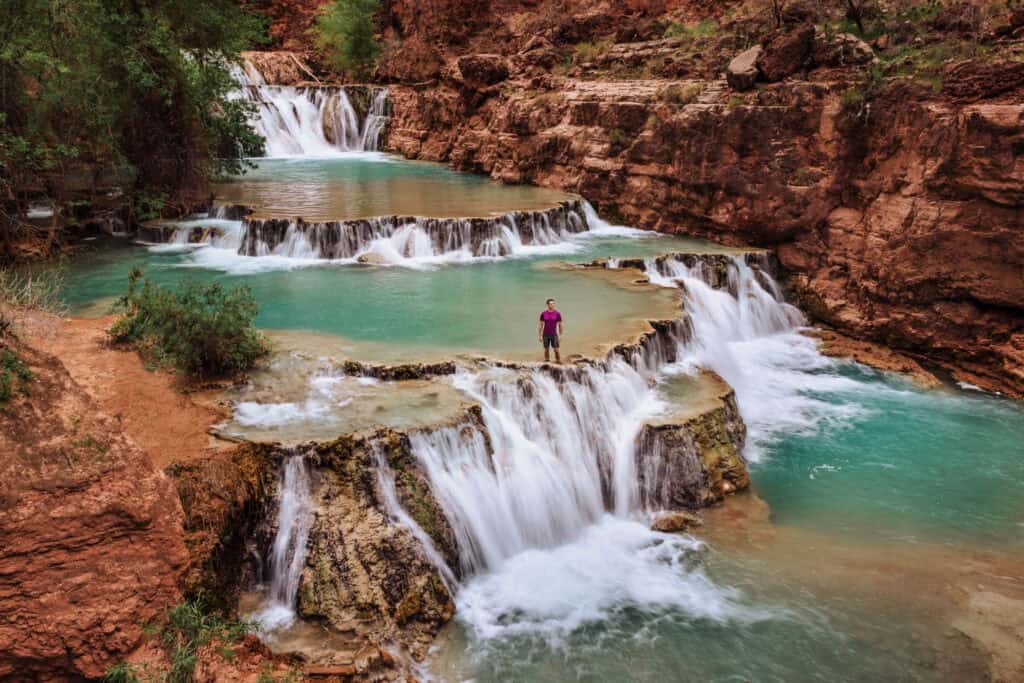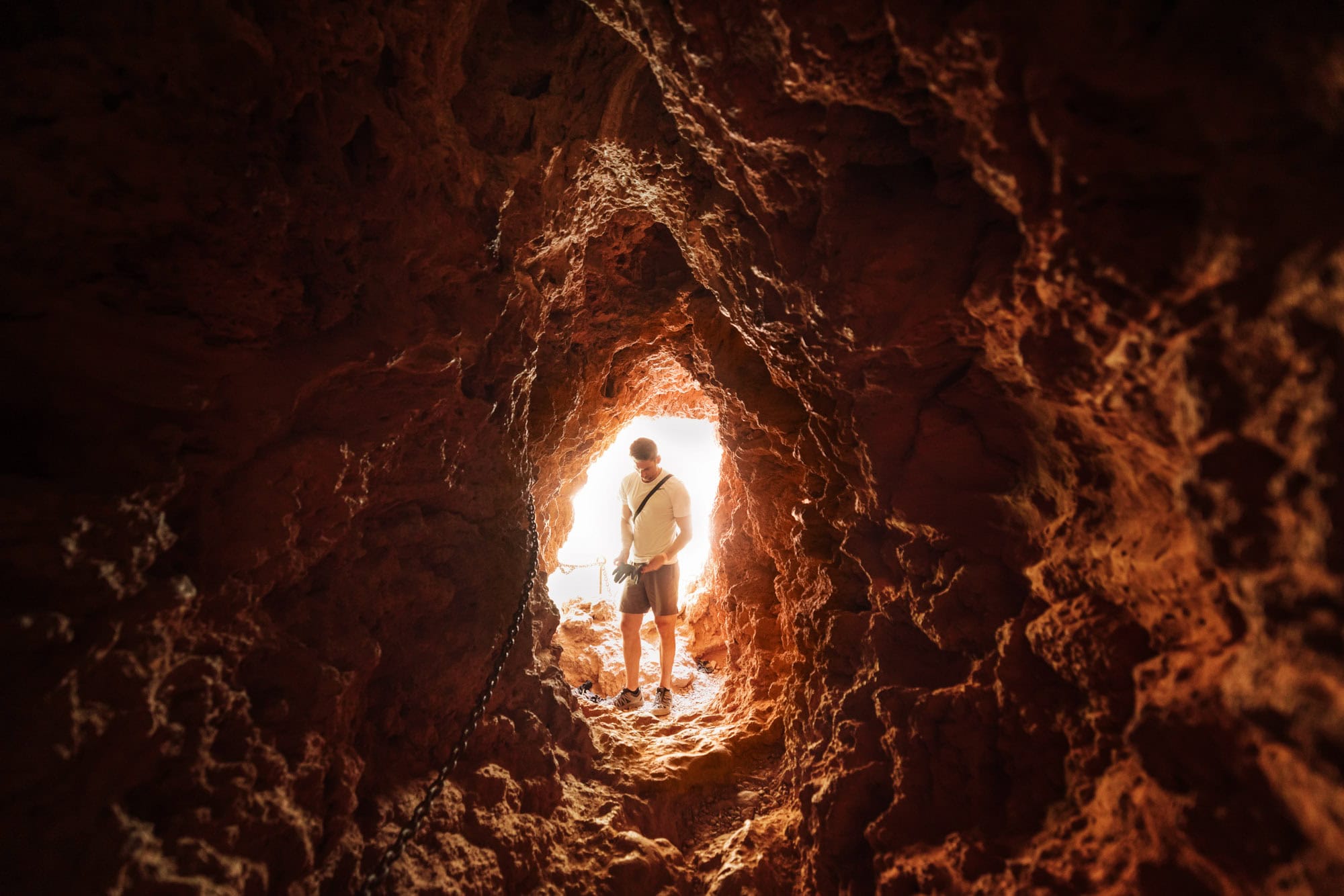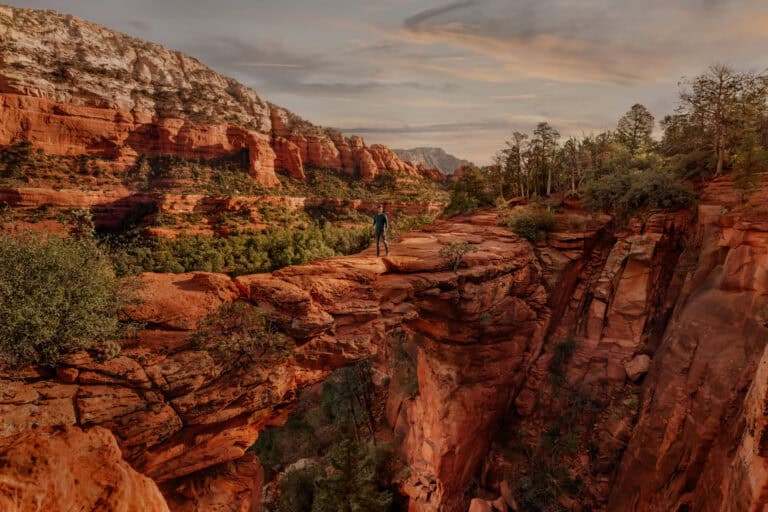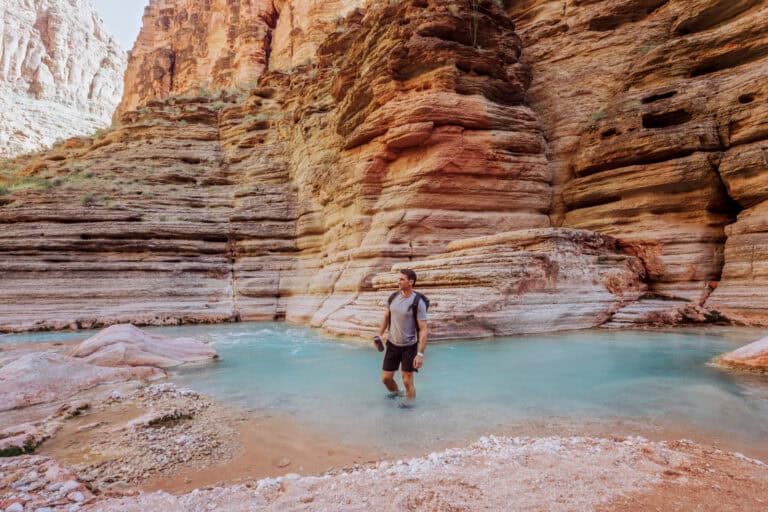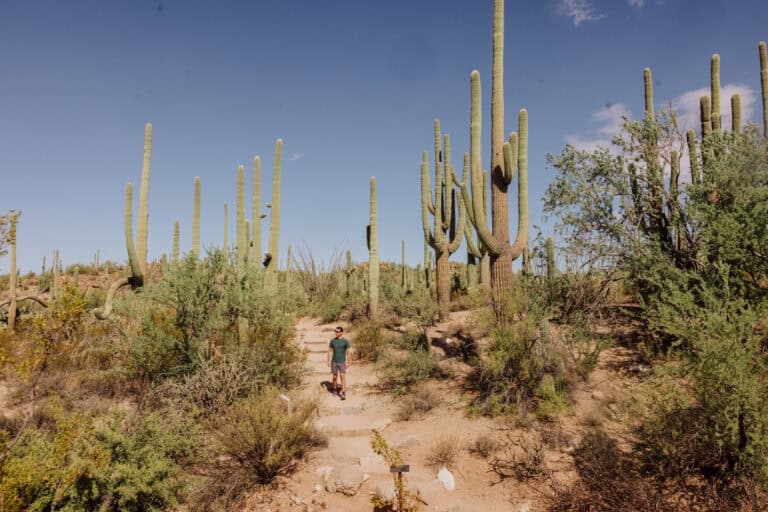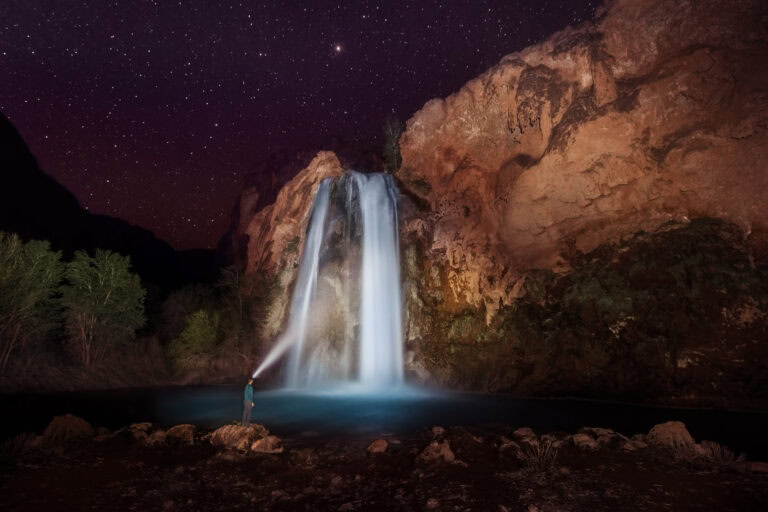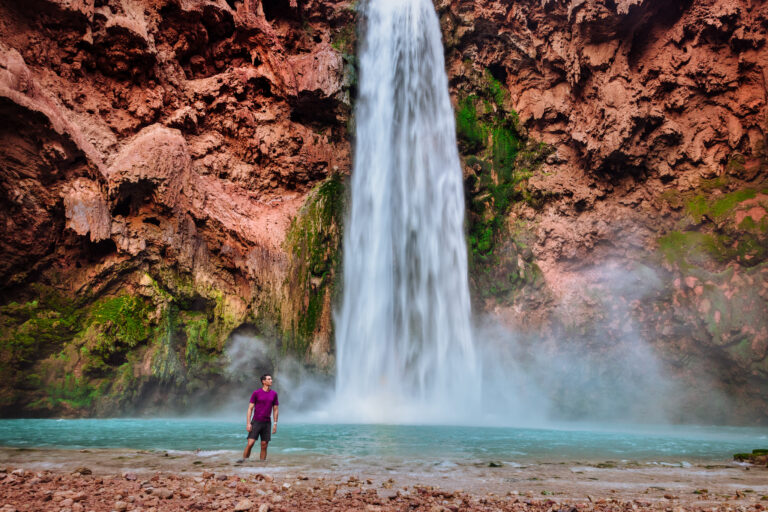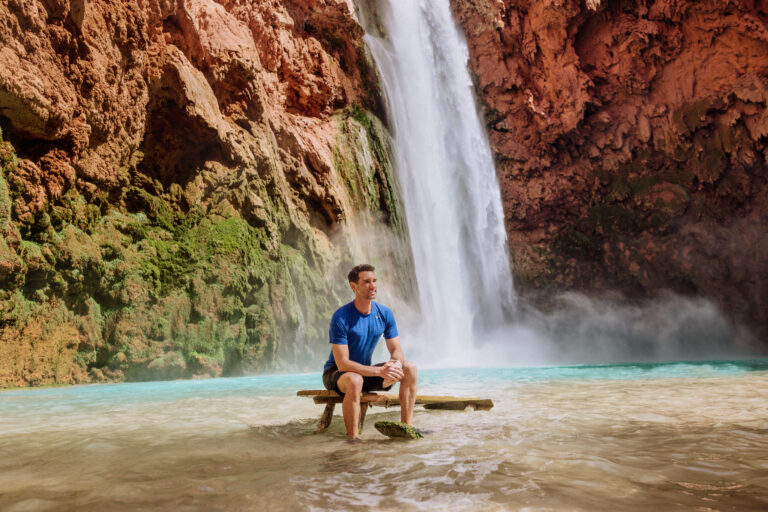The Descent Down Mooney Falls: The Hardest Hike at Havasupai

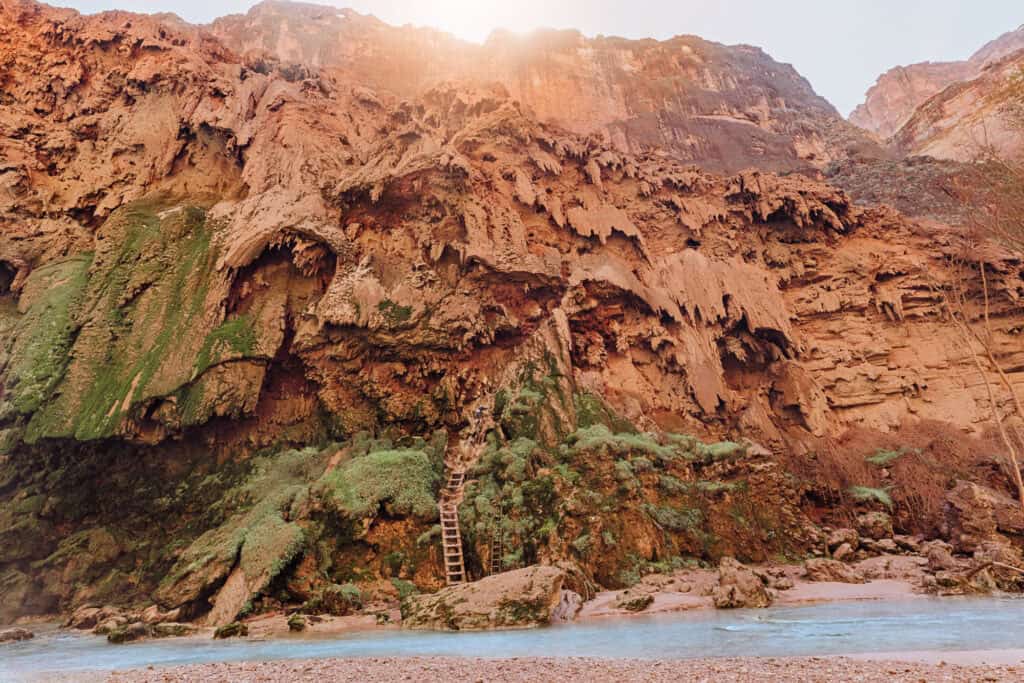
The descent to the base of Mooney Falls is challenging, but worthwhile.
The view is amazing! Plus climbing down is the only way to access the trail to get to Beaver Falls and the confluence with the Colorado River in the Grand Canyon.
The trail to Mooney Falls begins at the end of the Havasupai Falls Campground. It involves climbing through two tunnels carved in the rock, before a near-vertical descent. You’ll rely on rock steps, chains, and a ladder to get to the bottom.
Despite the dangers, there are no recent reports of people falling and getting severely injured.
Personally, this is the part of Havasupai Falls that excites me the least. I’m not big on heights, but basically force myself to power through the descent down Mooney Falls each time!
Key Info on Hiking to Mooney Falls
- The waterfall is on the north end of the Havasupai Campground.
- You’ll first have to climb down through tunnels, which are narrow.
- The descent is nearly vertical, down about 200 feet.
- Climbers rely on rock steps, chains, and ladders to descend.
- It’s single-file, with only one route up and down.
- Expect a line at both the top and the base, at certain times of day.
- The mist from the falls will be welcome in the heat, and sting when it’s cold.
- It’s important to carry a headlamp if there’s a chance you’ll climb back up after dark.
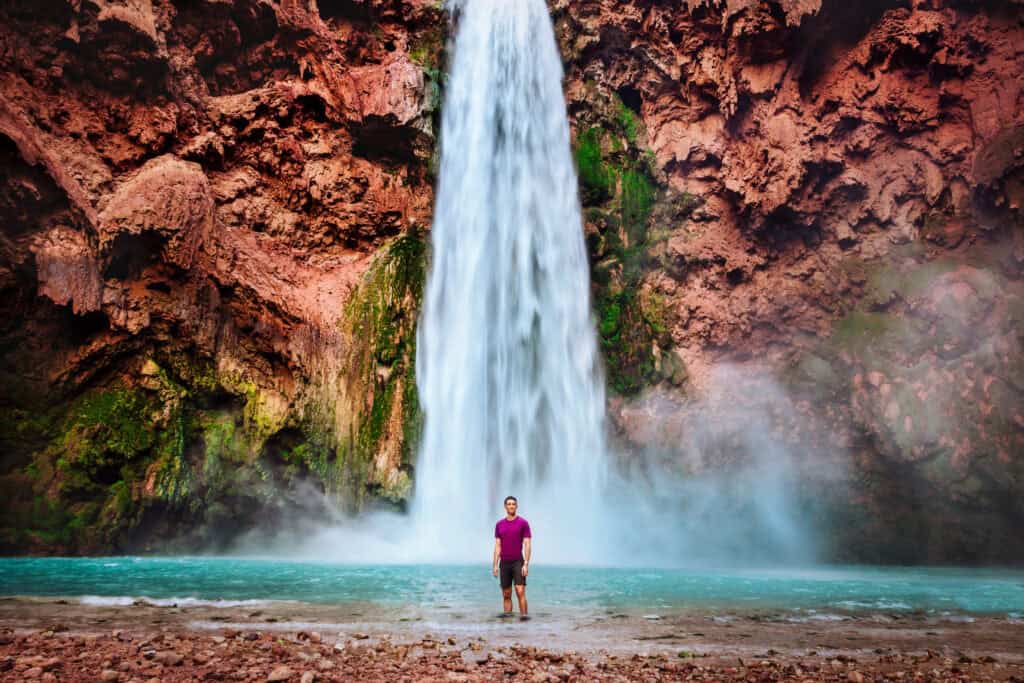
Getting to Mooney Falls
Havasu Falls marks the start of the Havasupai Campground. Mooney Falls is about a mile downstream, and it marks the end of the campground.
Havasu Creek, which is almost iridescent, flows somewhat calmly through the campground, before plunging off a 200-250-foot fall cliff to create Mooney Falls.
The trail to Mooney Falls is marked and easy to follow, around and down a rocky path at the north end of the campground. Frankly, the view from here is stunning enough, without making the climb down for people unable or uninterested.
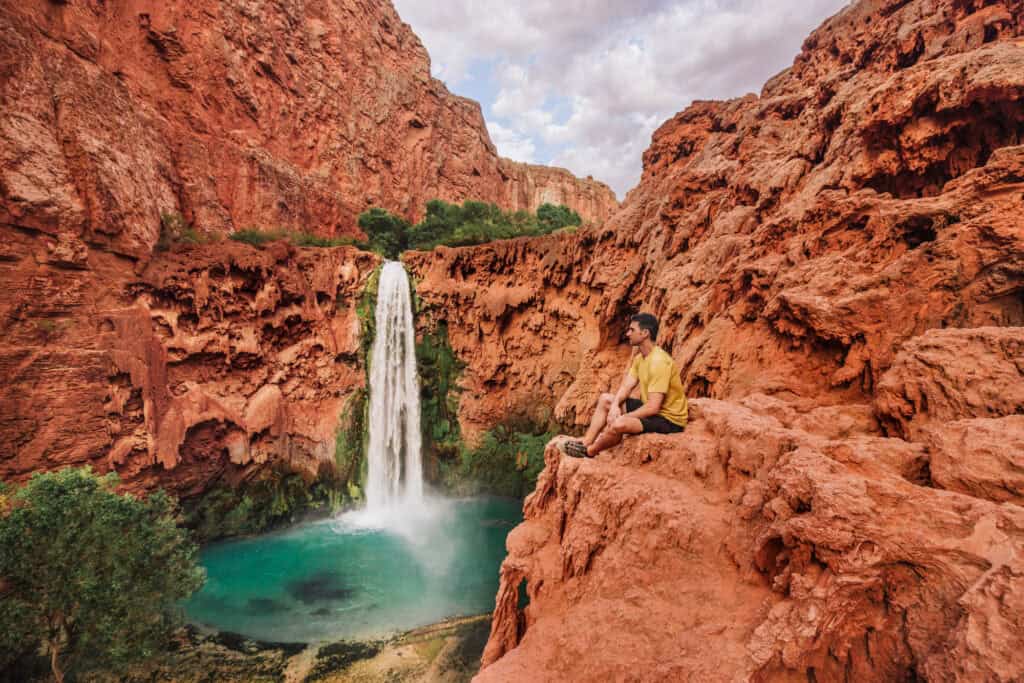
The Tunnels
You’ll go through two tunnels before making your descent. They were carved into the rock, with steps that are pretty easy to navigate. On cloudy days or at dusk, it’ll get pretty dark inside!
Here’s the view down into one of the tunnels. You can see how the ceiling height is comfortable for the most part. I’m about 6 feet tall.
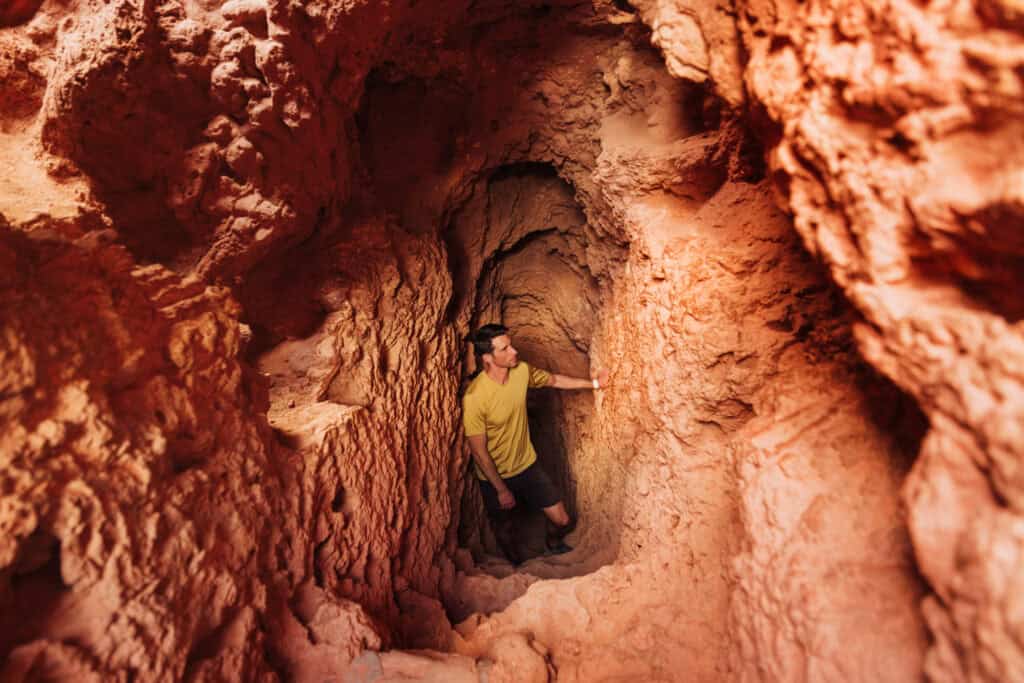
You can see how narrow the tunnels are, and the steps are visible here, too:
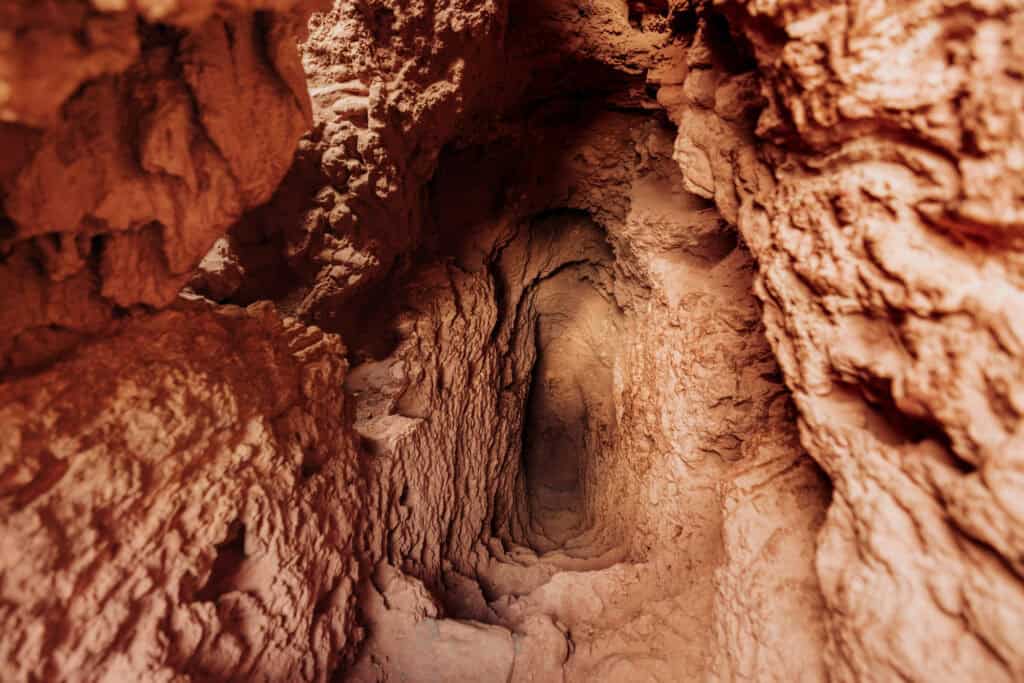
You’ll emerge from the second tunnel with one of the most beautiful views in all of Arizona, if not the USA. Here’s another view looking up on the hike out:
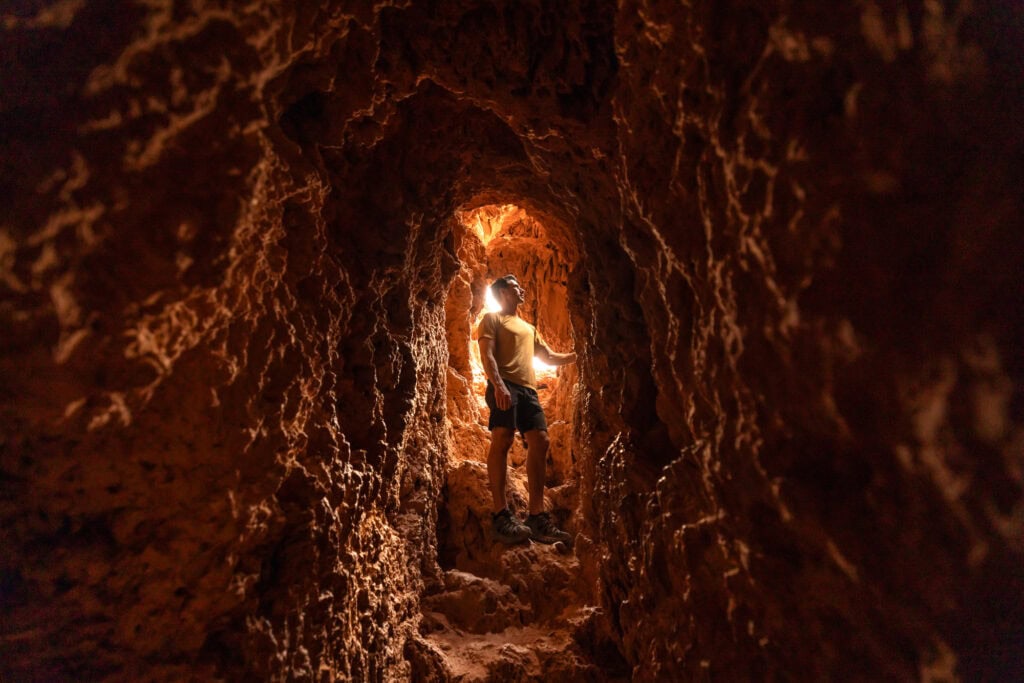
The Descent: Chains & Ladders
The descent is approximately 200 feet, and is not recommended for hikers with a fear of heights or anyone unsteady on their feet.
The combination of vertical drops, slippery surfaces, and the need for upper body strength to maneuver can make this climb particularly daunting.
Here’s a look at most of what you’ll be climbing down, from the base. You can see a couple of people along the route. This is an ideal situation, when it’s not crowded:
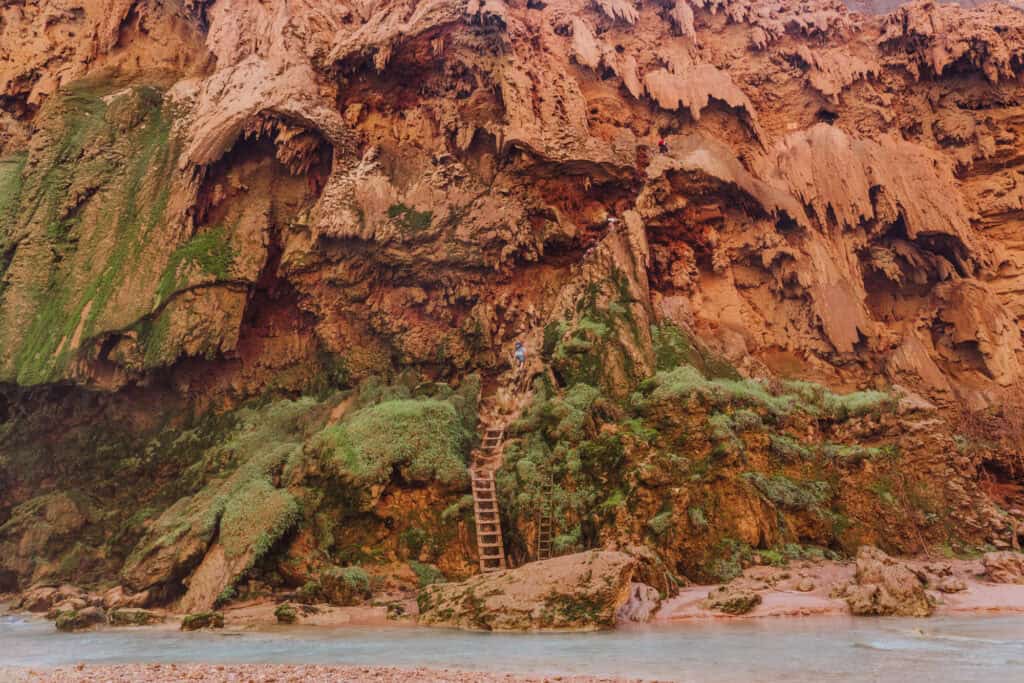
I’ve seen children under the age of 10 make the climb. I’ve also seen senior citizens in their 70s make the climb.
It’s really up to each individual person and their level of comfort.
It’s Single File
The descent down is steep, wet, and dangerous. There’s really only room for one person at a time.
This means, there’s often a line of people at the top or bottom, waiting for an opportunity to make the climb.
There are a couple of spots along the “path” where there’s room to move to the side to allow someone to pass in the opposite direction.
Hikers are always courteous and mostly patient and encouraging to each other.
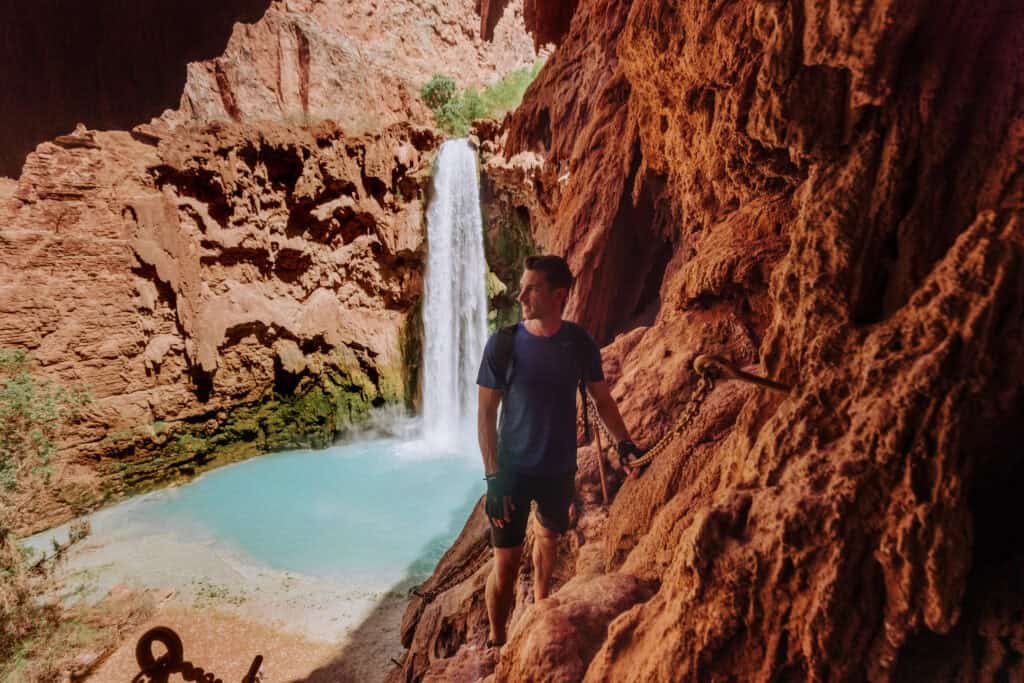
The Steps
“Steps” might not be the right word. There are uneven rock divets and ledges to step onto for much of the way down.
There’s always a debate: whether to go down facing out with your butt against the rocks, or reversed facing the rock the entire time.
While the answer is easy for the climb up (facing the rock) people are somewhat split on the best strategy for the climb down.
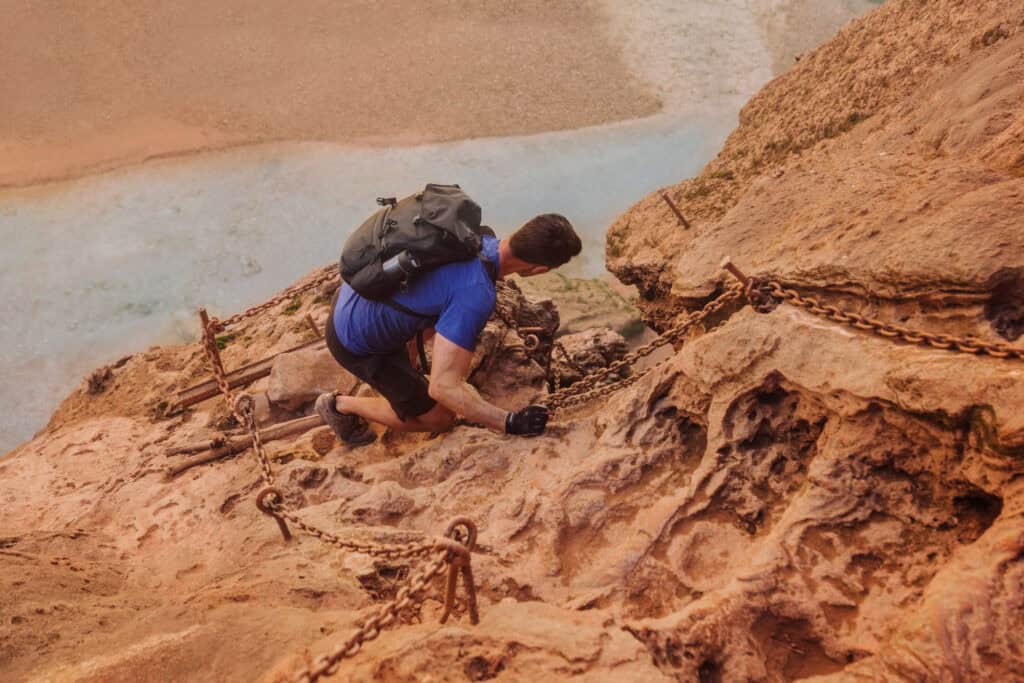
I’ve done both.
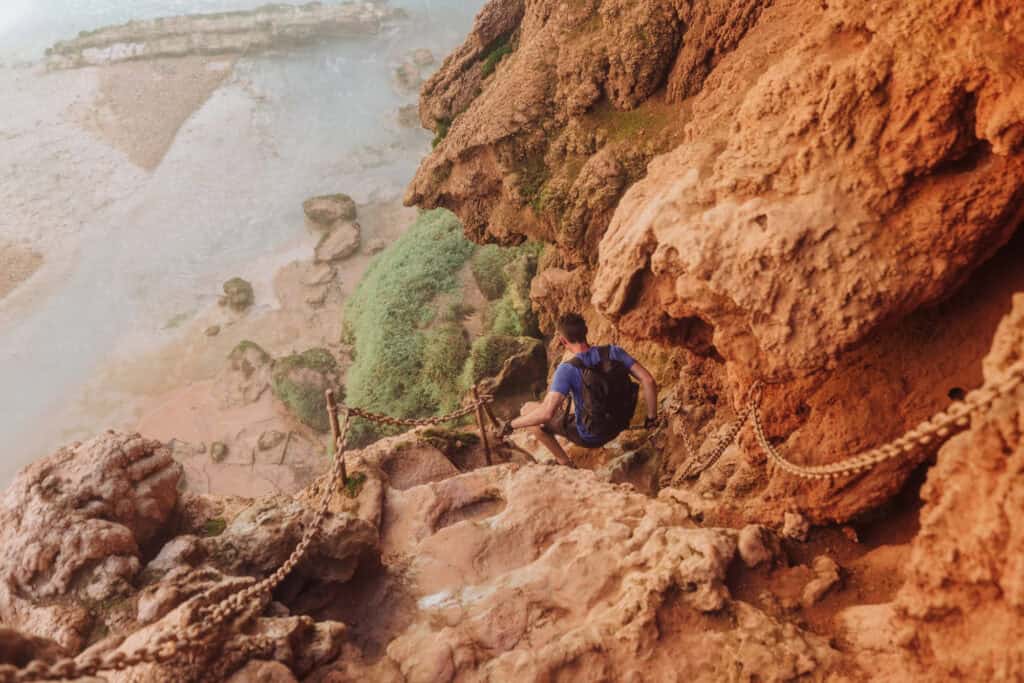
I tend to think you can better see the next steps to take below you if you’re facing out toward the waterfall.
There are a couple of spots where you can pause to look at the next leg of the climb, or move off to a side to let an overly-eager person pass.
Here’s a photo of one of the spots to pause, near the top of the ladder. You can’t beat the view:
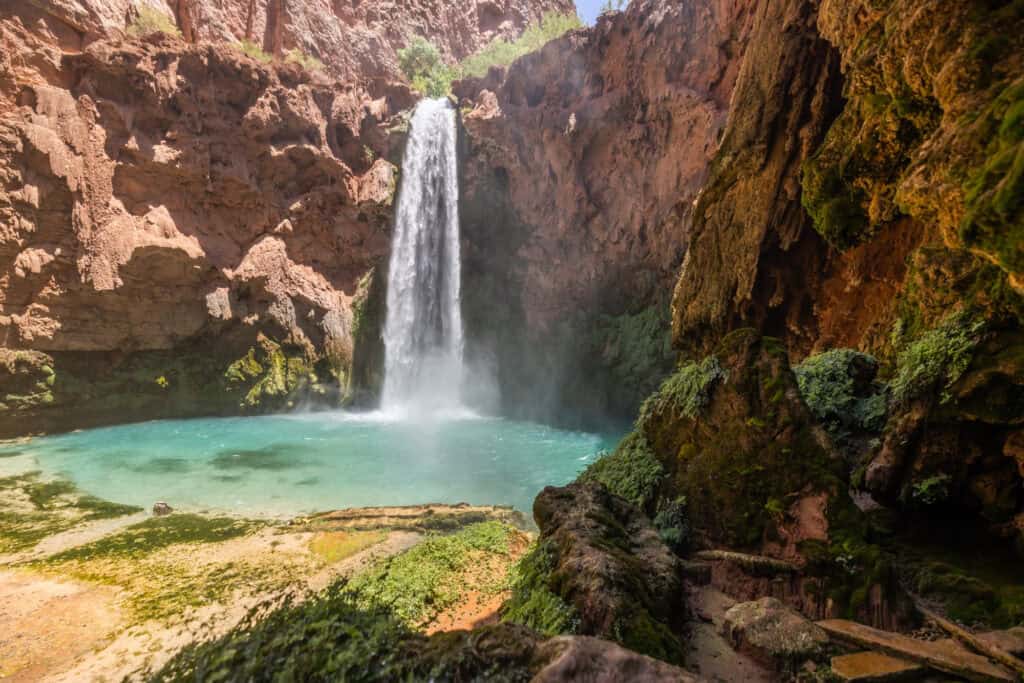
The Chains
Regardless of whether you face out or in on the climb down, you’ll need help from the chains to get down.
They’re secured into the rock with metal anchors.
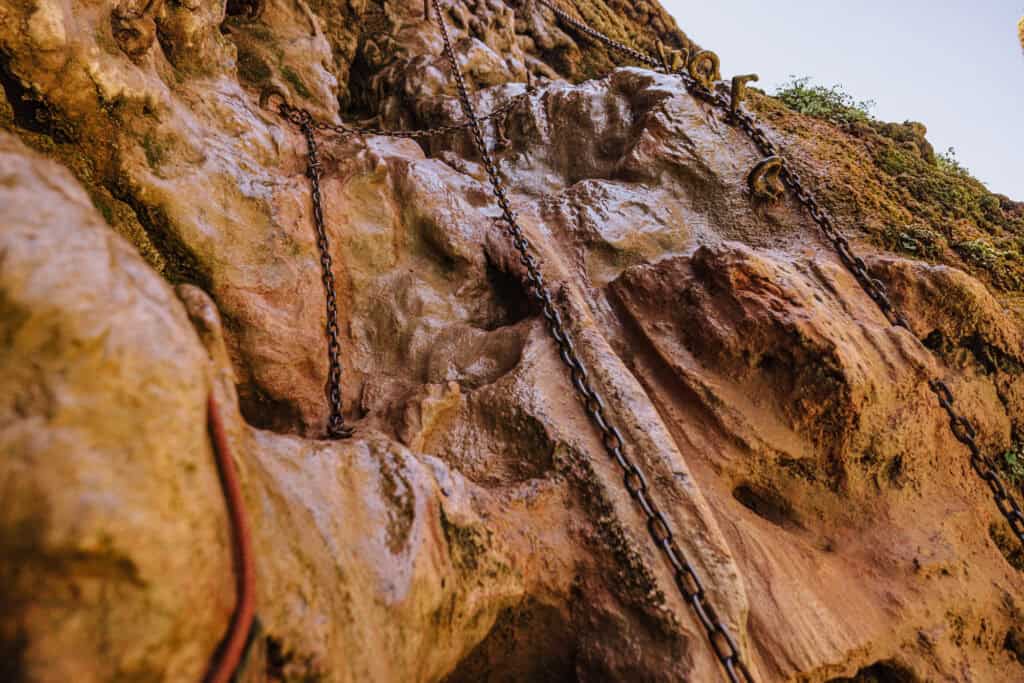
The chains will always be wet, since they’re constantly sprayed by mist from the waterfall.
Either bring hiking gloves (or garden gloves) or grab a pair from the pile that’ll be at the top and bottom of the trail. They’ll provide a much better grip.
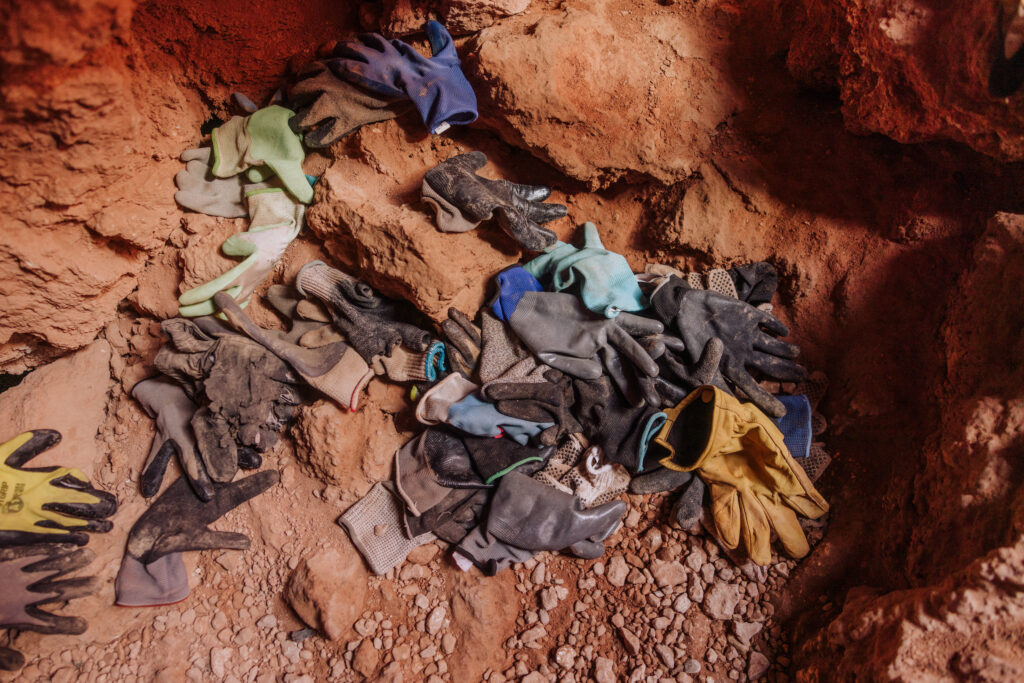
The Ladder
For me, the easiest part of the descent down Mooney is the wooden ladder. It’s steep and tall, but a ladder is much easier to scale up or down than the rock “steps.”
The ladder isn’t too slippery, and for me, once I step foot on the top rung on the way down, I breathe a sigh of relief that the hard part is over!
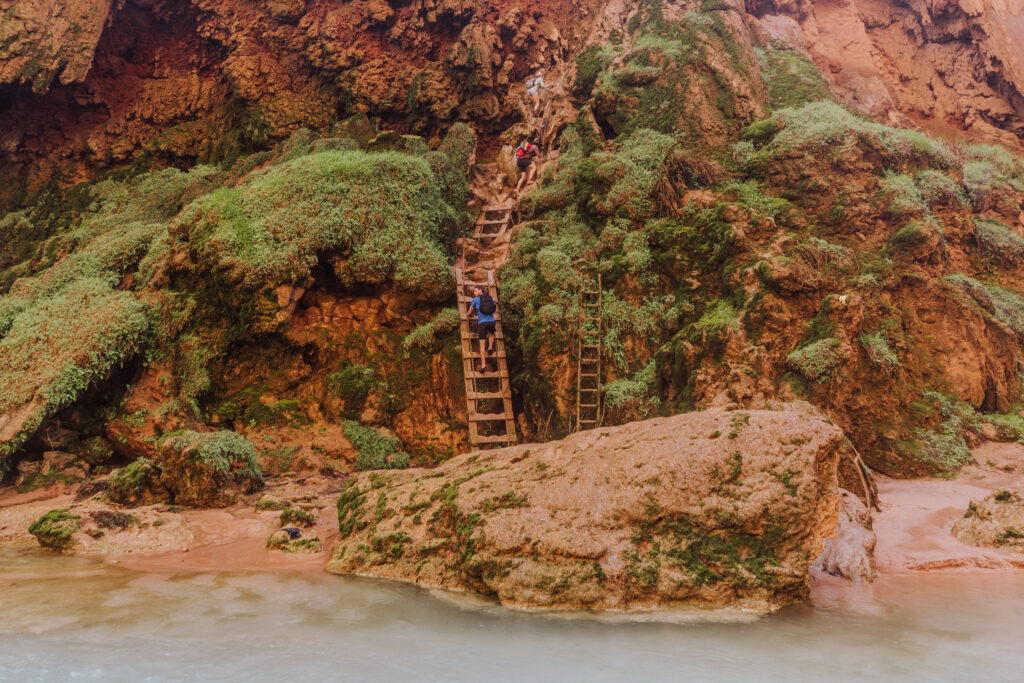
Hiker Rescues I’ve Witnessed
There’s no check-in system, no park rangers monitoring the descent, and no one ensuring hikers return safely by nightfall. If something goes wrong, you’re truly on your own.
June of 2024
The summer of 2024 was especially hot, so many hikers suffered from heat exhaustion. I was one of them, despite hydrating with extra electrolytes.
As I slept off my symptoms, a helicopter buzzed back and forth over the campground for hours. After dark, I could see flashlights flying through the trees toward Mooney Falls. I could hear hikers who’d climbed up Mooney after dark yelling to rangers with the Tribe that people were trapped below.
One of them was injured and unable to make it up. I believe the ranger on duty climbed down with a headlamp, and possibly brought the stranded hikers blankets or food. The helicopter used its spotlight to help locate the hikers and illuminate the area. It’s dangerous for the chopper to land in the canyon at any time, and especially the middle of the night.
They ended up sleeping on the trail down below overnight, before they were flown out the next day.
It’s important to note: there are many hazards on a trip to Havasupai Falls. The rescue(s) we witnessed were not caused on the climb down Mooney Falls itself.
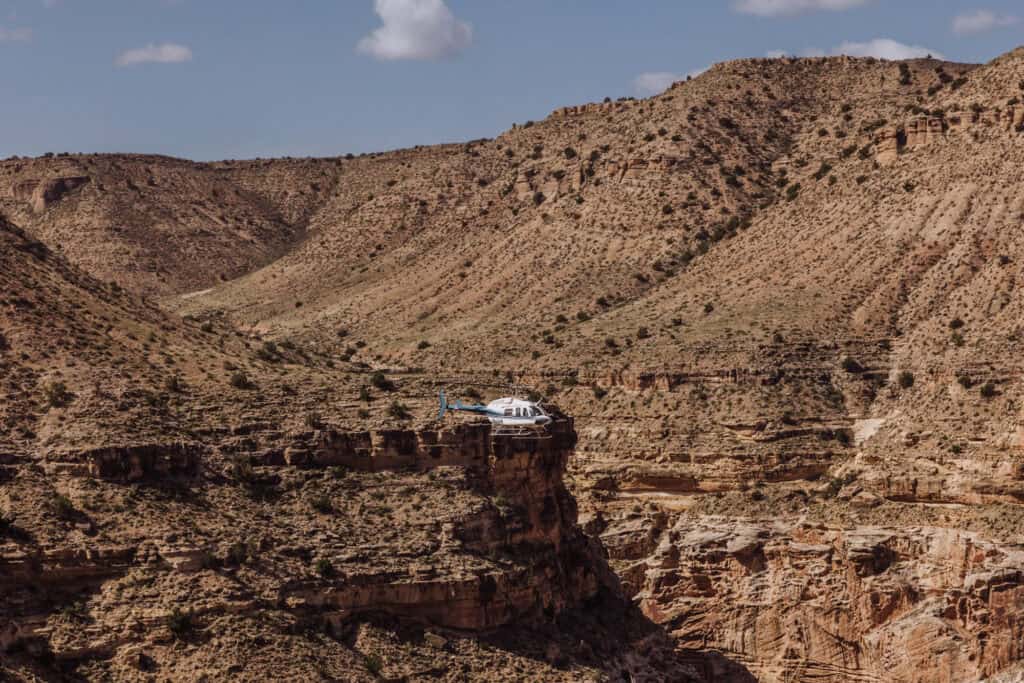
Helicopter Rescues
The Havasupai Tribe has an emergency helicopter landing spot near the base of Mooney Falls, but it may be inaccessible if recent flooding has damaged the area. Rescue operations are never guaranteed, and reaching help can take time, especially in poor weather conditions.
At the top of Mooney Falls, warning signs make it clear: descending is at your own risk. If you’re injured and require a helicopter hoist from below, you’ll be responsible for the cost of your rescue.
Deaths and Injuries at Mooney Falls
Mooney Falls is named after D.W. “James” Mooney, who fell to his death here, and unfortunately, he is not the only one.
Several fatalities have occurred over the years near Mooney Falls, reinforcing just how dangerous this climb can be. The deaths and severe injuries there in recent memory involved swimming, not climbing.
July 2010: Swimmer Swept Over the Falls
A 32-year-old man from Ogden, Utah, was camping at Havasupai when he went swimming at the top of Mooney Falls. Witnesses say he went underwater and never resurfaced. The Coconino County Sheriff’s Office determined that the current pulled him over the edge. His body was later found in Havasu Creek, about 100 yards downstream.
June 2012: Drowning in the Pool Below
A 16-year-old Boy Scout from St. George, Utah, drowned while swimming in the pool beneath Mooney Falls. According to the Coconino County Sheriff’s Office, several scouts were in the water, possibly attempting to swim through the powerful falls. The undercurrent pulled the teen under and nearly dragged another with him.
One scout managed to pull the boy to shore, but despite CPR efforts, he could not be revived. Meanwhile, other scouts became trapped behind the waterfall. The adults in the group had to form a human chain to help them safely reach the shore.
These tragedies highlight the hidden dangers of Mooney Falls—powerful currents, strong undertows, and the sheer force of the water. Even experienced swimmers can quickly find themselves in life-threatening situations.
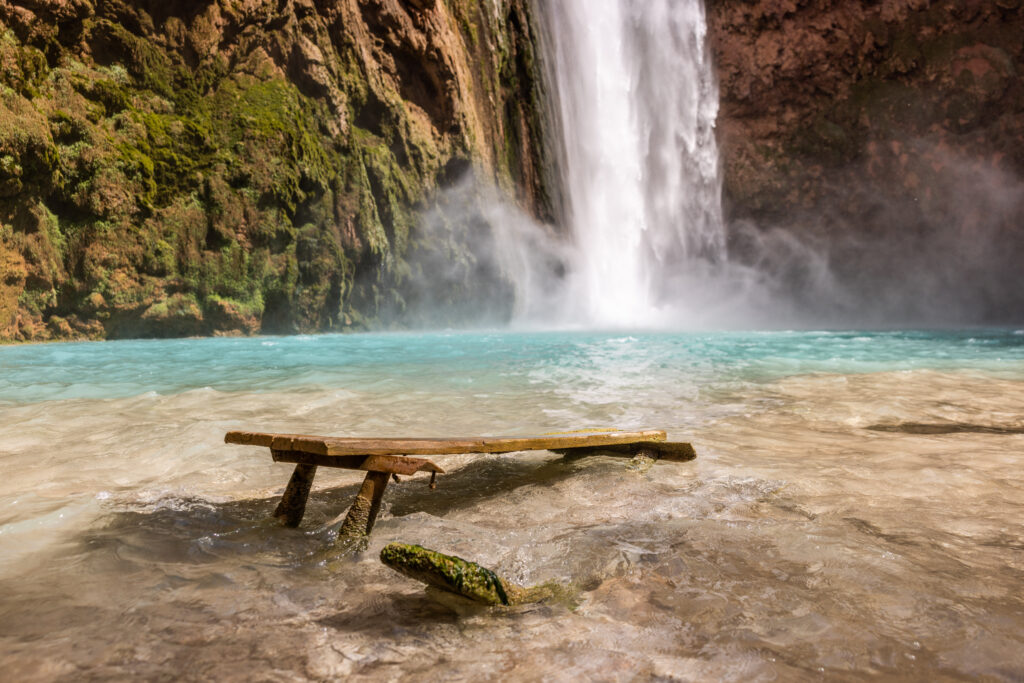
Wrap: Why the Climb Down Mooney Falls is Worth It
People react very differently to the descent. Some don’t think twice and scurry up or down. Others have panic attacks mid-climb. Others look at it and don’t even try. And still others power through the fear.
I fall into that last category. I don’t enjoy climbing down Mooney. I don’t love heights or risky climbs in general.
Still, I think it’s worth getting over my fears because of what you find at the base of the falls. The view is amazing. Plus, climbing down the cliff at Mooney Falls is the only way to get to the trail to Beaver Falls.
